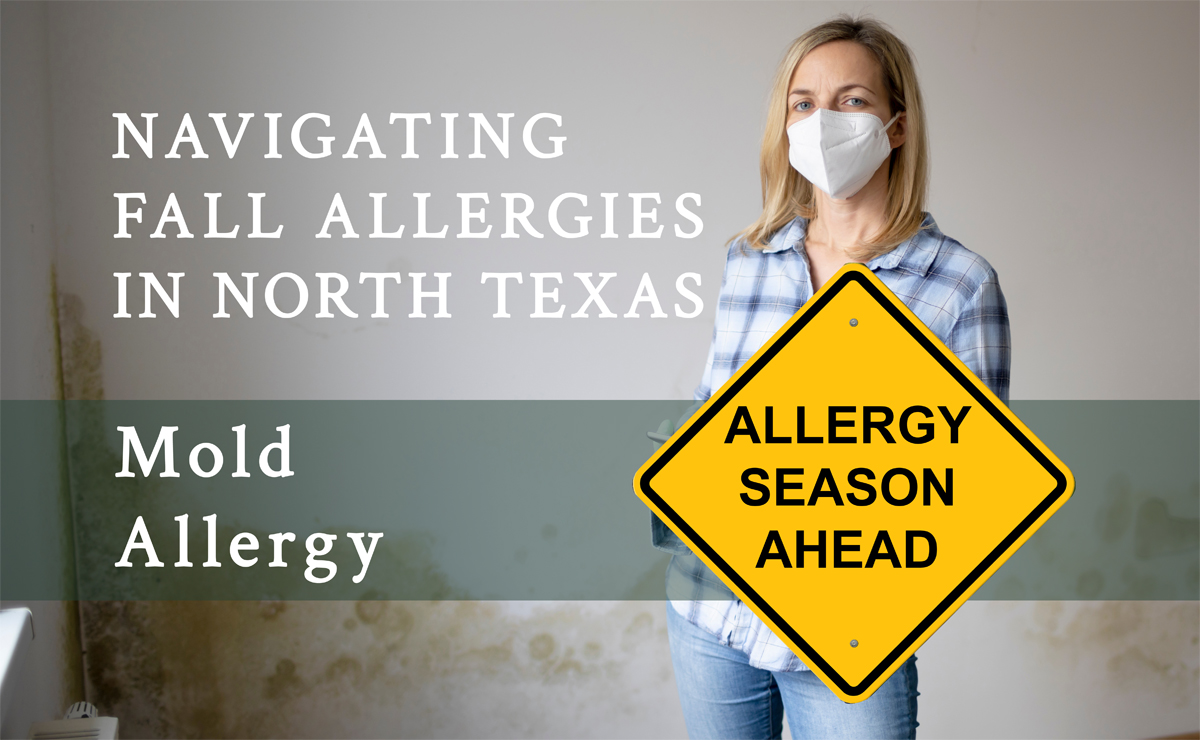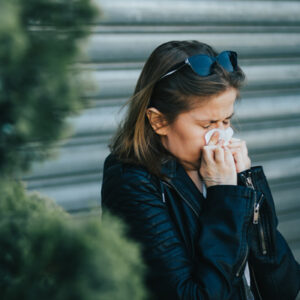
19 Nov Texas Allergy Center Helps You Navigate Fall Allergies in North Texas: Mold Allergy
As the vibrant colors of autumn emerge and the air turns crisp, many people eagerly anticipate the joys of fall. However, for individuals with mold allergies, this season can bring its own set of challenges. Mold spores thrive in damp environments, and the fall season, with its fluctuating temperatures and decaying foliage, provides an ideal breeding ground for these allergens. Let’s quickly explore the impact of mold allergies during the fall and review practical tips to manage symptoms and enjoy the season to the fullest.
What are Mold allergies?
Mold allergies are triggered by exposure to mold spores, tiny particles released by molds as they reproduce. Mold can be found both indoors and outdoors, and its prevalence tends to increase during the fall months. Outdoor molds, such as Alternaria, Cladosporium, and Aspergillus, flourish in damp conditions and decomposing organic matter, such as fallen leaves.
COMMON SYMPTOMS
Individuals with mold allergies may experience a range of symptoms when exposed to mold spores. These can include:
- Nasal Congestion: Mold spores can irritate the nasal passages, leading to congestion and difficulty breathing.
- Sneezing: Allergic reactions to mold often manifest as frequent sneezing, particularly when outdoors.
- Itchy or Watery Eyes: Mold spores in the air can come into contact with the eyes, causing itching, redness, and watering.
- Coughing and Throat Irritation: Inhaling mold spores may trigger coughing and irritation in the throat.
- Skin Irritation: Some individuals may experience skin reactions, such as rashes or hives, upon contact with mold.

Managing Mold Allergies TIPS
- Stay Informed about Mold Levels: Regularly check local weather reports or pollen counts for information on mold spore levels. Limit outdoor activities on days when mold counts are high.
- Keep Indoor Spaces Dry: Use dehumidifiers to maintain indoor humidity levels below 50%, reducing the likelihood of mold growth. Fix any leaks promptly and ensure proper ventilation in bathrooms and kitchens.
- Clean and Ventilate: Regularly clean and dust your home to minimize the accumulation of mold spores. Ensure good air circulation by using fans and opening windows when weather permits.
- Outdoor Precautions: When working outdoors, especially with activities like raking leaves, wear a mask to reduce inhalation of mold spores. Consider using goggles to protect your eyes.
- Choose Appropriate Landscaping: Opt for landscaping practices that minimize mold growth, such as removing dead leaves, keeping gutters clean, and maintaining a well-ventilated garden.
While fall may pose challenges for those with mold allergies, proactive measures can help individuals manage their symptoms and enjoy the beauty of the season. By staying informed, maintaining a mold-resistant environment, and taking precautions when engaging in outdoor activities, individuals with mold allergies can navigate the fall season with greater comfort and well-being.
Our board-certified allergist and highly trained staff are here to help you find relief. We will address questions and concerns, and then find treatment and care that is right for you! Get started today.

